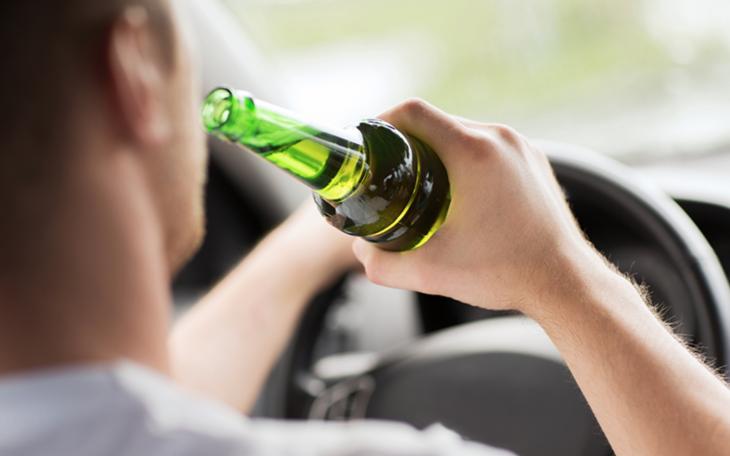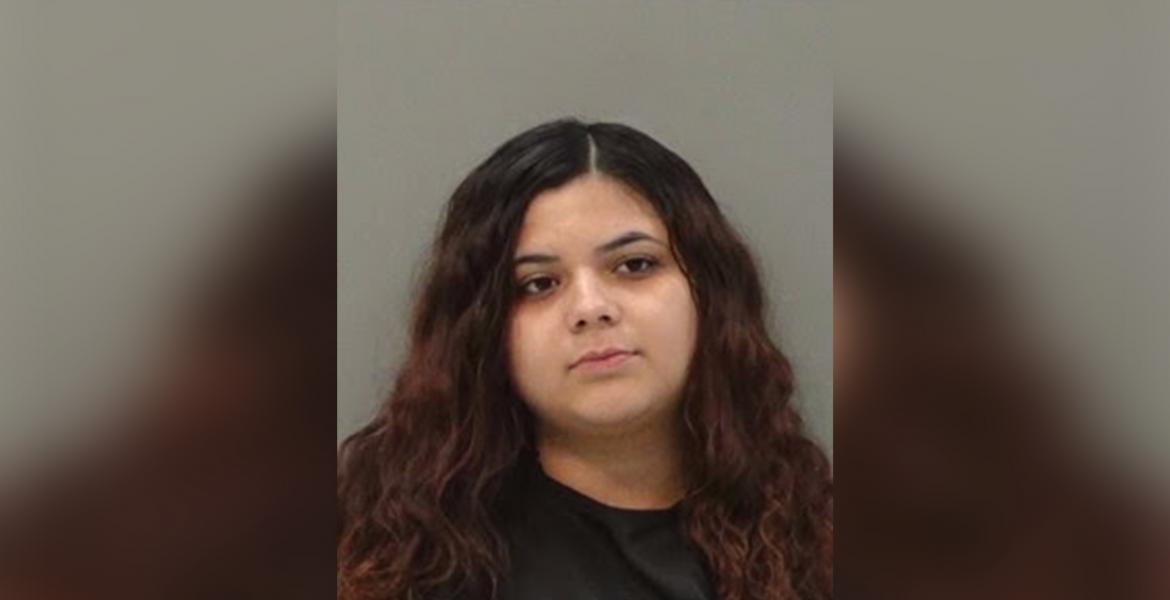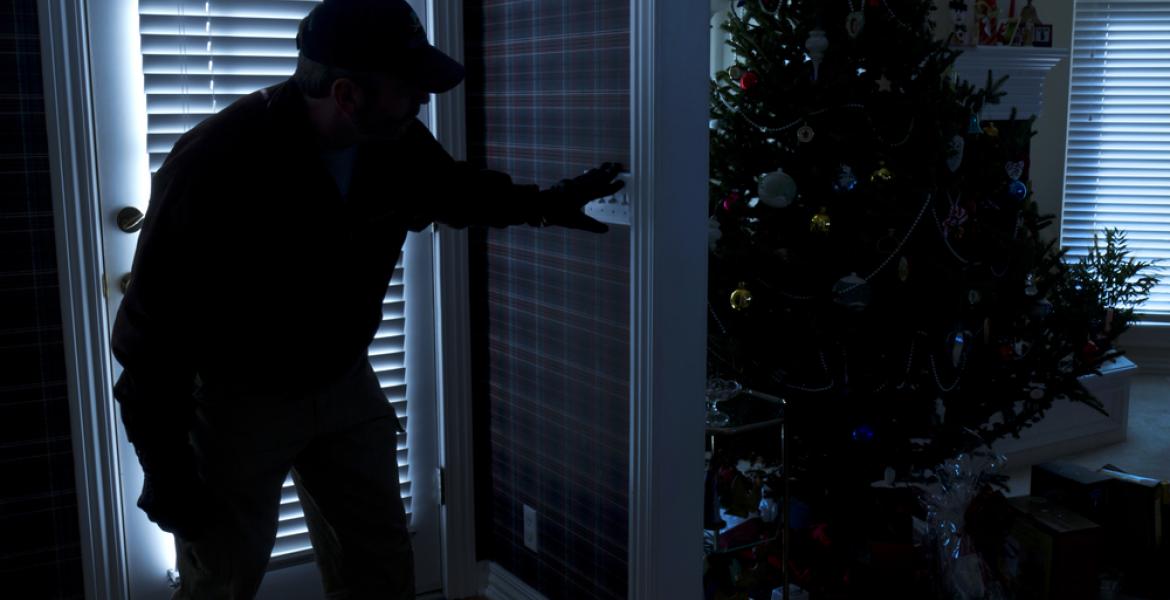SAN ANGELO, TEXAS – At 9 a.m. Thursday morning, court resumed for the murder trial of 47-year-old Stephano M. Culbreath. After Wednesday's opening statements, read here, both the Defense and State Attorneys spoke to various initial crime scene investigation personnel, and District Attorney Allison Palmer said a few additional witnesses would take the stand. However, throughout the day, issues with these witnesses developed, which wasn't surprising being that Palmer mentioned that a few of them would not be awarded "citizen of the year."
By the end of the day, Palmer indicated that two female witnesses failed to show. One said she was in the emergency room, but that could not be verified. Also, another witness, Justin Ray Rodela, 31, was arrested at the courthouse for being under the influence of methamphetamine. He was taken to an area to detox so he could take the stand, but never managed to be in the condition to do so. Therefore, after court recessed for the day, Rodela had to appear before Woodward for his offenses. He was arrested for a Failure to Appear Warrant, Possession of Controlled Substance PG 1>=1G<4G and Possession of Marijuana <2OZ.
Judge Woodward had to work out a way to keep Rodela in custody so he can take the stand without issue next week.
Morning Testimony
To start the day, San Angelo Police Detective Chris Chappa took the stand. During his testimony, Chappa explained that he was only on the crime scene for an estimated 5-7 minutes after being briefed by Sgt. Thomas. His main focus, he said, was Culbreath’s maroon colored suburban.
As described during Wednesday's court proceedings, Chappa once again told the jury of the condition of the suburban that he located in the 3200 Block of Grove Circle. Upon relaying the information, Defense Attorney Jessica Skinner asked Chappa to describe what kind of markings he saw on the car.
Chappa said he had observed “two hand prints on the hood” of the car “next to each other.” Chappa further suggested that due to the angle of the evidence photographs, there was a possibility of the markings being produced by only one hand.
Skinner brought to Chappa’s attention the distinct disturbance in the dust, and, taken aback by her statements, Chappa became defensive.
When the witness was passed to Palmer, the D.A. argued that the disturbances in the dust could have indeed been made by only one hand. Thereafter, Chappa was dismissed.
Trace analysis expert Stephen Fava took the stand next. Fava works with the Department of Public Safety (DPS) Lab. Fava spoke for almost an hour on defining trace evidence, or evidence that cannot be seen with the naked eye, and continually acknowledged that “items were not contaminated.”
Defense Attorney Skinner did not ask him any questions.
Angel Rios was the day's third witness. Rios works with the Texas DPS Law Enforcement Support team. At the time of the murder, in July 2015, Rios was working in the Lubbock Crime Lab. Rios testified on the three different submissions he received from the crime scene. Items included were swabs from the maroon suburban, the shirt worn by Culbreath at the time of his arrest, paint swatches, and the defected tire and pedal from the bike found near David Titus’ body.
Following an array of questions from D.A. Palmer, Rios detailed to the jury extensive explanations of his analysis process of comparing debris found on the submitted evidence, gunshot residue (GSR) analysis, as well as testing results from the various swabs that he had received.
After much discussion on his analysis reports, Rios brought out the defected bike tire to showcase to the jury that he had received in the lab in May 2016.
When asked why it took so long for him to analyze the tire, Rios replied, “There are other high-profile cases, and there is a bit of a backlog.
Palmer continued to question Rios on his find specific to the bike tire. Rios explained that, based on “the fibers found on the tires,” a blunt force rather than a slice from a sharp edge caused the tire's damage.
“Based on your knowledge,” could the vehicle “have hit the tire?” Palmer asked.
“Not necessarily,” replied Rios.
Currently, Culbreath is on trial for the shooting as well as running David Titus over with his car; because Rios testified that the defect to the bike tire could not necessarily be tied back to the maroon suburban, Skinner took the opportunity to remind the jury that the connection between the two cannot be established.
“You’ve never seen the suburban?” Skinner asked.
“No,” replied Rios.
“[The suburban] wasn’t submitted to the lab?”
“No.”
“No calculations [were made] to see if the suburban could’ve created that defect?”
“Correct.”
Palmer scrambled to save her witness by proving that Rios did not have the ability to work with the suburban because of storage issues.
“What’s your storage like at the DPS Crime Lab?” she asked.
“It’s not particularly large.”
“Do you have a huge back log?”
“Yes.”
“Do you take in entire vehicles?”
“For a short time… [cars] are usually returned after a week,” Rios said.
In an attempt to keep the jury from considering that the tire never touched the vehicle, Palmer asked Rios, “When you say ‘no match, what is that based on?”
He replied, “Some things I looked at,” such as the color and texture of the car.
Skinner declined to ask any further questions.
Before the court recessed for lunch, the State called SAPD Crime Scene Technician Diana Garcia. Garcia spent a little over an hour explaining her jobs, the photographs she took at the scene and the evidence she and her colleagues collected and processed.
Afternoon Testimony
After lunch, court resumed with testimony by Forensic Pathologist Thomas Parsons out of Lubbock. After he provided a background on his expertise, Parsons mentioned that Tom Green County does not have its own medical examiner, so he contracts with the county. He also explained that he performed the autopsy of the victim, David Titus. Overall, he said he has performed between 6,100 and 6,200 autopsies during his career.
Parsons went into depth about what an autopsy is and how he goes about conducting an examination. He explained that, on July 27, 2015, at 11:15 a.m., he performed the autopsy on Titus.
He detailed that the body was in "good condition." It was concealed and sealed in a body bag. Based on the information received on the body, Parsons said Titus' body "was as expected."
"He seemed to be a young, healthy man with injuries," Parsons said.
He told the jury that Titus had an entrance gunshot on the right side back of the neck, and an exit wound underneath the exterior side of the neck. Titus also had contusions and abrasions, including one over the central part of Titus' forehead.
Parsons also detailed how the bullet entered Titus' right side of the neck, traveled through muscles, the spine, and the spinal canal where it lacerated the spinal chord. It also went through the collar of Titus' shirt.
"The collar of his shirt was soaked in blood," he noted.
Parsons added that he was not able to determine the range of fire because of the intervening shirt, but he did say this was not a "contact wound."
Overall, Titus' death was caused by the gunshot wound to the neck and the severing of the spinal chord. After he was shot, because of the type of injury, Titus would have not had voluntary movement. He may have died instantaneously, Parsons indicated, but could have suffered as long as five minutes.
After explaining the autopsy results of Titus, Palmer approached Parsons with images taken during the autopsy. These images showed Titus after his body was cleaned. The images showed the entrance and exit wounds, and the areas of bruising and abrasions.
During the publishing of these images to the jury, Culbreath did not look at the images at first. He took notes, but after a while, he watched on as Parsons explained each photo.
Once Parsons reviewed those photos with the jury, Palmer re-published a previous crime scene photo of Titus' body at the crime scene. When that appeared on the screen in the court, someone in the courtroom said, "Oh God!"
The image showed Titus' body on the street, facing upwards, and his eyes still open. Blood lined his face, and Parsons said Titus' head had been moved at some point because of the way the blood flowed with and against gravity.
After reviewing the images, Palmer asked Parsons, "Given your exam and the injuries, specifically the circular wound to the forehead, are they consistent with being struck with an object?"
"They are consistent and possible," he responded.
When asked if they were consistent with someone who got hit by a car, Parsons said, "They were not consistent."
Parsons then went on to explain the results of a toxicology test taken on Titus through the blood. The toxicology sample was sent to a lab in Pennsylvania. He indicated that test results showed a presence of ethanol, alcohol, marijuana, methamphetamine and a metabolite. Parsons noted that a metabolite is something ingested and broken down by enzymes in the blood or stomach into other chemical compounds.
Parsons added that Titus had enough in his system to be under the influence with a sense of euphoria or in an agitated state.
During Defense questioning, Skinner asked Parsons who was present during the autopsy. He confirmed that SAPD Detectives Cannady and Castro were present.
"We give them the opportunity to see the process," he said.
She also re-confirmed that Parsons did not know what position the victim was in. After a few more clarification questions, Parsons was excused.
Next on the stand was Paul Dyer, a criminal investigator for the District Attorney's Office. Dyer, who worked for SAPD for 29 years prior to his current position, assisted in the investigation of Titus' death.
Dyer explained to the jury how he reviewed information from Our Time game room at 2027 Sherwood Way received on July 30, 2015. He reviewed surveillance video and customer transaction printouts from July 25, 2015 from 4 a.m. to 9 a.m. Dyer also explained how the printouts had an hour difference. The time shown on the printouts were an hour earlier in real time.
D.A. Palmer approached Dyer with evidence initially provided by Dyer, which included Google Maps he produced for the case. After reviewing the information, she motioned to admit the evidence, which was done with no objection from the Defense.
Once that was done, Dyer detailed for the jury the transactions performed by Culbreath on July 25. He put cash on his customer account a few times from as early as 6:23 a.m. to 7:41 a.m. Dyer also noted that he got videos from only two working cameras, which were in extremely poor condition. Therefore, he did not find anything on those videos. He also got security footage from a convenience store on 8th and Chadbourne, but did not find anything there as well.
On Aug. 11, 2015, Dyer said he got a call from Detective Cannady, who said someone from H&H Snack & Save on Howard had contacted him to let him know that Culbreath had been there on the night of the crime. There were four possible angles, but Dyer said the quality of the videos were also very poor. Therefore, Culbreath could not be positively identified, but the videos did have an accurate date and time stamp to Dyer's knowledge.
Dyer also detailed for the jury the maps he created that highlighted where the victim was located on 13th & MLK, the location of Leonard Nash on 8th St. & Chadbourne, Old Folks Home bar on 12th St. & Irving, and Loretta Mathis' residence on W. 12th St. where Culbreath was staying at the time. The other map outlined the crime scene from 13 E. 13th St. to 13th & MLK, and to Our Time on Sherwood Way.
After he explained the maps, Palmer passed the witness, but Skinner had no questions.
The final witness for the day, who had to come in place of the problem witnesses, was Robin Johnson, a crime scene technician for SAPD.
Johnson explained how she has worked for SAPD for four years. She also detailed her steps taken to obtain GSR presumptive tests at 3205 Grove St., and the steps she took to collect items and take photos associated with the crime. Johnson is the one who collected the jersey of Berry Beaty (as described in our previous story). During her testimony, however, Skinner interrupted the proceedings and asked to approach the bench.
Once more, the jury was asked to step outside for a moment while the court addressed Skinner's objections.
During her testimony, Johnson said the presumptive test on Beaty's jersey was negative, but the forensic scientist who conducted the GSR test in Austin told the jury the day before that the jersey tested positive for GSR. Mr. Chany said that the stubs for the jersey had five characteristic GSR particles on it (gunshot residue): two on the front and three on the back.
This discrepancy highlighted the issues discussed previously by Mr. Chany previously in regards to presumptive testing.
Because of the scientific nature of GSR testing, and since Chany had detailed the science behind it, Skinner said Johnson's testimony was not relevant and would not push the trial forward. She added that the information would confuse the jury because GSR and presumptive testing are different.
"She's receiving a kit and following directions," Skinner said. "There were no witnesses and no science behind it. A scientist has already explained the process."
She added that this testimony had a high potential of prejudice when considering a non-scientific testing approach.
Judge Woodward responded, "Okay. I'm going to overrule your objections."
Woodward told Skinner since the scientist did explain the process thoroughly, the jury would be able to determine the differences between the tests.
Skinner continued with her objection, however; therefore, Palmer had to do a review of Johnson's training and background. Johnson explained everything she learned was on the job. She did not go to school; nor does she have certification on GSR kits. However, she has done close to 100 kits. She said she always uses gloves, and explained the process of performing the kits.
Johnson also said she and other trainees shadowed on the job, and would conduct tests while at the scenes on one another for practice. However, when asked if trainees used the residue from guns as part of their testing, Johnson said no.
Skinner asked Johnson if she knew specifically how GSR works. Johnson explained the presumptive aspect, but when asked what a nitrate was, Johnson said, "I'm not sure." Presumptive tests are used to test nitrates.
Johnson reiterated though that she knows how the test works, and what nitrates react to and the effects. She simply does not know where they "come from."
After a few more questions, Skinner told the court she had additional objections because she felt Johnson's testimony would mislead the jury. Woodward said he'd make a sub note, and brought the jury back into the courtroom.
Palmer resumed her questioning, and Johnson explained in-depth the steps she took to collect evidence from Culbreath's SUV, Culbreath himself, and the collected clothing articles from Culbreath and Mr. Beaty.
Court recessed for the weekend shortly after 5 p.m. with the arrest of Rodela. As people filed out of the courtroom, Rodela was ushered into the room to appear before Judge Woodward. His face was swollen, and Palmer said previously that he "wasn't feeling too good."
Note: Brandy Ramirez contributed to this story.
Subscribe to the LIVE! Daily
Required






Post a comment to this article here: